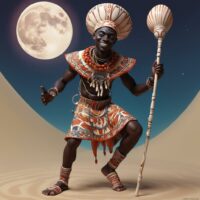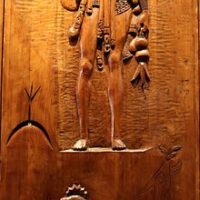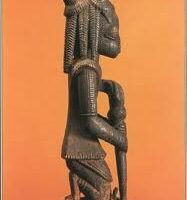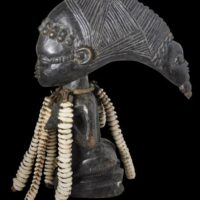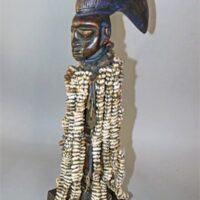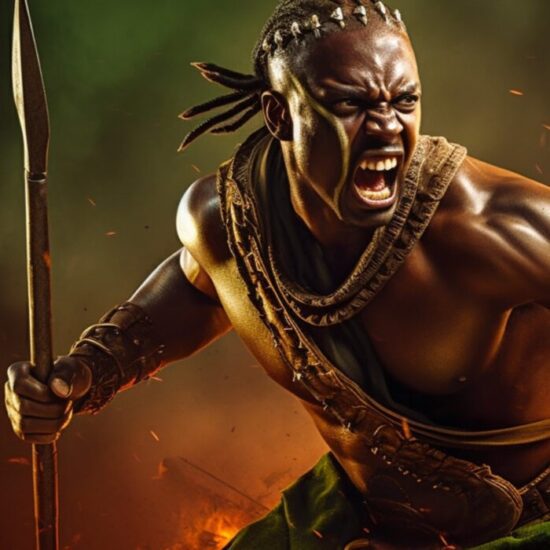Eshu : The Trickster God
Listen
At a glance
| Description | |
|---|---|
| Origin | Yoruba Mythology |
| Classification | Gods |
| Family Members | N/A |
| Region | Nigeria, Benin |
| Associated With | Trickery |
Eshu
Introduction
Eshu, a revered Orisha (deity) in Yoruba mythology, embodies the dynamism of chaos and communication. Worshipped by the Yoruba people of West Africa, he stands as a central figure, not just for his trickster nature, but also for his role as the guardian of crossroads and the mediator between the divine and human worlds. Eshu’s complexity lies in his ability to weave both mischief and creation into the fabric of human experience, influencing fate, fortune, and everyday decisions. Understanding Eshu unlocks a deeper appreciation for the intricate interplay of forces that shape the Yoruba worldview.
Physical Traits
Eshu’s artistic portrayal in Yoruba tradition reflects his multifaceted nature. Unlike some deities with fixed appearances, Eshu’s form is deliberately fluid. Sculptors often depict him as a wooden figure, but details vary widely. He might be youthful and handsome, or older and imposing. A consistent theme is his color scheme – red and black – symbolizing his connection to both creation and destruction. Emblems of power like pipes or staffs are common attributes. Some portrayals even depict Eshu with a phallic head, alluding to his association with fertility. This diversity underscores Eshu’s role as a shapeshifter, a being who transcends ordinary limitations.
Family
Eshu’s place within the Yoruba pantheon is both fascinating and complex. While some myths claim him as the son of Oduduwa, the first Yoruba king, others suggest a more primordial origin, emerging alongside the other Orishas from the creation itself. Regardless of his birth, Eshu occupies a unique space – neither fully divine nor entirely human. He acts as a bridge between these realms, a role reflected in his relationship with other Orishas.
On one hand, Eshu finds kinship with Orunmila, the Orisha of wisdom and divination. Their partnership exemplifies the balance between chaos and order. Eshu, the trickster, disrupts the status quo, while Orunmila provides foresight and guidance. However, Eshu’s relationship with other deities can be more contentious. He is often seen as the playful foil to Obatala, the Orisha of creation and purity, who becomes the target of Eshu’s mischievous pranks.
Eshu’s familial connections extend beyond close companions. He is sometimes considered the son of Yemoja, the powerful goddess of the sea and motherhood, placing him within a lineage of influential Orishas. His siblings include Ogun, the god of iron and war, and Shango, the god of thunder and lightning. These relationships position Eshu at the heart of the Yoruba divine family, where his actions and interventions can have a ripple effect on the domains of his siblings. This interconnectedness highlights the collaborative, yet sometimes competitive, nature of the Yoruba pantheon.
Other names
Eshu’s identity transcends a singular name. Across regions and cultures, he adopts various titles that illuminate his multifaceted nature. Referred to as Elegba or Legba in the African diaspora, particularly within Santería, these names emphasize his role as a guardian at life’s crossroads, where pivotal decisions and transformations unfold. In Brazil’s Candomblé and Umbanda traditions, he is known as Exu. This diversity extends to the Yoruba religion itself, where Eshu possesses a rich tapestry of epithets – Ẹlẹ́jẹ̀lú, Olúlànà, Ọbasìn – each highlighting a distinct aspect of his character. From the playful trickster to the protective guide, these names showcase Eshu’s adaptability and enduring significance across various African diasporic religions.
Powers and Abilities
Eshu embodies the very essence of duality. He thrives in the messy crossroads of life, a realm of disorder and confusion, yet he also acts as a bridge between the human and divine, ensuring offerings reach the Orishas. This master linguist, fluent in all earthly tongues, is both the “onile-orita” – the builder of houses at road junctions – and the guardian of those very crossroads. He presides over a seemingly contradictory domain: “sin and punishment, fate and accident, certainty and confusion, and life and death.”
Eshu’s influence extends beyond mere observation. He is a manipulator without peer, stirring discord and chaos with a thought. As the gatekeeper of crossroads, he holds sway over the paths we choose. His unparalleled communication skills make him the ideal ambassador between humans and the divine, yet he can also disrupt these messages, weaving confusion and conflict.
Modern Day Influence
Eshu’s legacy transcends the boundaries of the Yoruba culture. His stories and wisdom continue to resonate, offering guidance and moral lessons even today. In popular imagination, Eshu is often portrayed as a trickster, a reminder of life’s unpredictable nature and the need for adaptability. Artists, writers, and musicians all find inspiration in his complex character and captivating tales.
The worship of Eshu continues to be practiced in Africa, the Caribbean, and the Americas, wherever the Yoruba diaspora has carried their traditions. Within contemporary Yoruba communities, offerings are still made to Eshu, and he is consulted for guidance. His symbolic presence is woven into the fabric of their artistic expression, from music and literature to visual art.
Eshu’s reach extends beyond Yoruba traditions, captivating a wider audience. He appears in works of fiction, inspiring characters known for their wit and ability to disrupt the status quo. His image resonates with those who find beauty in life’s unpredictable twists and turns, and who recognize the potential for positive change within chaos.
Related Images
Frequently Asked Questions
What is lorem Ipsum?
I am text block. Click edit button to change this text. Lorem ipsum dolor sit amet, consectetur adipiscing elit. Ut elit tellus, luctus nec ullamcorper mattis, pulvinar dapibus leo.
What is lorem Ipsum?
I am text block. Click edit button to change this text. Lorem ipsum dolor sit amet, consectetur adipiscing elit. Ut elit tellus, luctus nec ullamcorper mattis, pulvinar dapibus leo.
What is lorem Ipsum?
I am text block. Click edit button to change this text. Lorem ipsum dolor sit amet, consectetur adipiscing elit. Ut elit tellus, luctus nec ullamcorper mattis, pulvinar dapibus leo.
What is lorem Ipsum?
I am text block. Click edit button to change this text. Lorem ipsum dolor sit amet, consectetur adipiscing elit. Ut elit tellus, luctus nec ullamcorper mattis, pulvinar dapibus leo.
What is lorem Ipsum?
I am text block. Click edit button to change this text. Lorem ipsum dolor sit amet, consectetur adipiscing elit. Ut elit tellus, luctus nec ullamcorper mattis, pulvinar dapibus leo.

